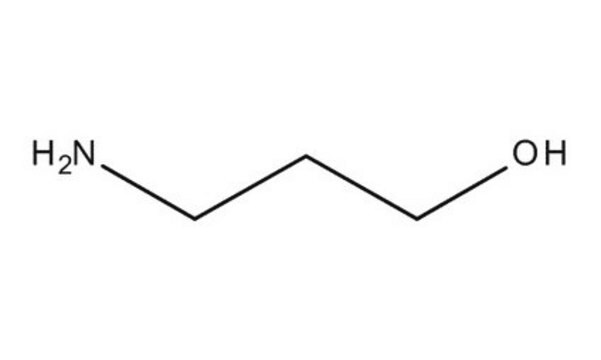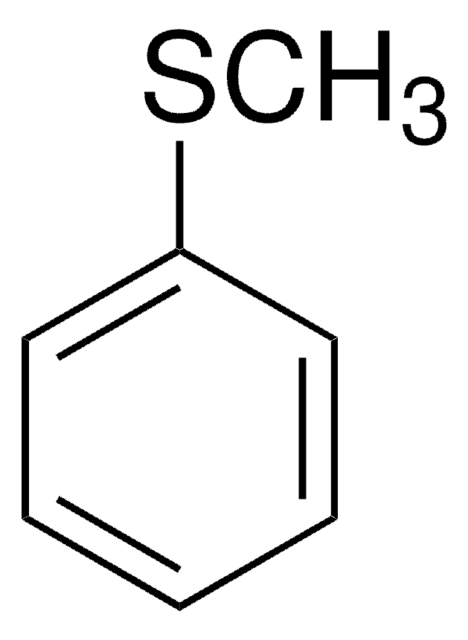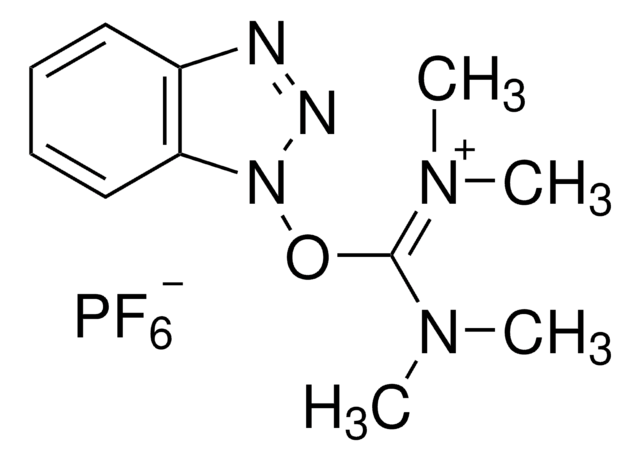8.00894
N-Ethyldiisopropylamin
for synthesis
Synonym(e):
N-Ethyldiisopropylamin, N,N-Diisopropylethylamin
About This Item
Empfohlene Produkte
Dampfdruck
14 hPa ( 20 °C)
Qualitätsniveau
Assay
≥98% (GC)
Form
liquid
Selbstzündungstemp.
240 °C
Wirksamkeit
200-500 mg/kg LD50, oral (Rat)
Expl.-Gr.
0.7-6.3 % (v/v)
pH-Wert
12.3 (20 °C in H2O, as an emulsion)
Kinematische Viskosität
0.88 cSt(20 °C)
bp
127 °C/1013 hPa
Übergangstemp.
flash point 9.5 °C
Dichte
0.76 g/cm3 at 20 °C
Lagertemp.
2-30°C
InChI
1S/C8H19N/c1-6-9(7(2)3)8(4)5/h7-8H,6H2,1-5H3
InChIKey
JGFZNNIVVJXRND-UHFFFAOYSA-N
Allgemeine Beschreibung
Anwendung
- POSS-basierte, selbstorganisierte Hybridpolymer-Nanopartikel mit dualer Reizantwort: Beschreibt die Synthese von Hybridpolymer-Nanopartikeln unter Verwendung von N-Ethyldiisopropylamin im Assemblierungsprozess (Yang et al., 2022).
- Magnetische Steuerung der Lebenszeit im Zustand der Ladungstrennung durch kovalente Anlagerung eines Platinkomplexes: In diesem Artikel wird die Verwendung von N-Ethyldiisopropylamin bei der Herstellung magnetisch kontrollierbarer Platinkomplexe beschrieben (Kozaki et al., 2021).
- Hybrid-Blockcopolymere von Polyestern/Polycarbonaten und Polypeptiden, die über sequenzielle Ringöffnungspolymerisation in einem Gefäß synthetisiert werden: Erläutert die Einleitung der Polymerisation mit N-Ethyldiisopropylamin zur Bildung von Hybrid-Blockcopolymeren (Gradišar et al., 2018).
Hinweis zur Analyse
Dichte (d 20 °C/ 4 °C): 0,755 - 0,758
Wasser (K. F.): ≤ 0,20 %
Identität (IR): entspricht
Signalwort
Danger
Gefahreneinstufungen
Acute Tox. 3 Inhalation - Acute Tox. 4 Oral - Aquatic Chronic 2 - Eye Dam. 1 - Flam. Liq. 2 - STOT SE 3
Zielorgane
Respiratory system
Lagerklassenschlüssel
3 - Flammable liquids
WGK
WGK 2
Flammpunkt (°F)
49.1 °F
Flammpunkt (°C)
9.5 °C
Analysenzertifikate (COA)
Suchen Sie nach Analysenzertifikate (COA), indem Sie die Lot-/Chargennummer des Produkts eingeben. Lot- und Chargennummern sind auf dem Produktetikett hinter den Wörtern ‘Lot’ oder ‘Batch’ (Lot oder Charge) zu finden.
Besitzen Sie dieses Produkt bereits?
In der Dokumentenbibliothek finden Sie die Dokumentation zu den Produkten, die Sie kürzlich erworben haben.
Kunden haben sich ebenfalls angesehen
Verwandter Inhalt
Fmoc resin cleavage and deprotection follows the difficult task of detaching the peptide from the resin support and removing all the side-chain protecting groups of the amino acid residues to yield the desired peptide.
Unser Team von Wissenschaftlern verfügt über Erfahrung in allen Forschungsbereichen einschließlich Life Science, Materialwissenschaften, chemischer Synthese, Chromatographie, Analytik und vielen mehr..
Setzen Sie sich mit dem technischen Dienst in Verbindung.












